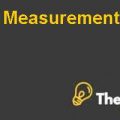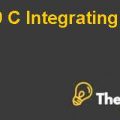
European Distribution Strategy Case Solution
Introduction
Amazon was established in 1998. In 1996 and 1997, the company expanded due to the high sales of the product. The company has made strategically positioned distribution center (DC) which has reduced the lead time and reduced the dependency on the main supplier.
In 1998, Amazon expanded its product lines by launching its video and DVD stores. Due to these new categories, the company established the relationship with music, video and DVD wholesalers. In addition, companies maintained the high level of the quality and productivity in its distribution centers. The company developed the metrics to measure the work performance of the company, and this performance information was routinely shared with the individual worker in order to increase the efficiency of the company and effectively sell to their customers.
Amazon international comprises of Amazon Europe and Amazon Japan, and Japan now represents 35% of the revenue. It was the fastest growing segment of the company, therefore the company decided to sustain its growth as Amazon Europe had multiple expansion options. That is it could replicate the board array of the product lines Amazon offered in the US, Launch new market place activities or expand into other European countries. Due to the expansion, the company is expecting that Amazon Europe would exceed Amazon U.S in terms of revenue by 2004.
Amazon needed to build an infrastructure, which supported this mission. Moreover, Tom Taylor is the Director of the Amazon.com and he has to decide which infrastructure would be the best support for the company’s expansion.
Problem in the case
The problem of this case is how the European Distribution Network (EDG) should be configured. There are many alternatives available to the company for their expansion. These are the following alternatives available for the expansion plan:
- The company needs to keep three independent distribution centers (DC) in the United Kingdom, Germany, and France.
- Amazon makes different sites which are linked to single European distribution center
- The company has to keep the three distribution centers and allow them to fulfill customers’ order from other country sites
- The company should keep only two Distribution Centers, and through those centers it could serve Northern European customers and Southern European customers.
European distribution network (EDN)
In 1998, Amazon Europe planned to expand in the European market by targeting two countries, which are United Kingdom and Germany as these both countries have the largest online market. In order to expand in the European market, Amazon acquired a leading online book retailer in each country: Book pages.co.uk in the United Kingdom and Telebuch.de in Germany. Due to this acquisition, the competition of the company decreased, and Amazon became the leading online book seller in UK and Germany. In 2000, Amazon continued its expansion plan and entered the French market, however in this expansion Amazon did not acquire an online bookseller, but it built the site from scratch. During this expansion in France, Distribution Center proved to be strategically located to serve new countries.
However, setting up an independent operating unit in a new country would be very expensive for Amazon Europe. In Exhibit 1 and 3, when the company would open the new distribution center then the net income of the company would drastically decrease.................
This is just a sample partial case solution. Please place the order on the website to order your own originally done case solution.













